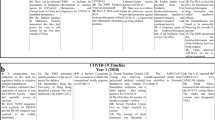Abstract
Severe acute respiratory syndrome coronavirus 2 (SARS-CoV-2) is readily transmitted from person to person. We evaluated the emerging landscape of SARS-CoV-2 variants in Bangladesh from a retrospective study of nasopharyngeal swabs collected from 130 SARS-CoV-2-positive cases randomly selected over 6 months. Mutation analysis of whole-genome sequencing of 130 SARS-CoV-2 variants revealed 528 unique coding mutations, of which 102 were deletions, 6 were premature stop codons, and the remaining were substitutions. The most common mutation in the cohort was ORF1b:P314L, with a frequency of 98.5%. A total of 132 unique coding mutations were observed in the spike protein gene. Fourteen mutations were mapped to the spike protein receptor binding domain (RBD). These mutations increase the affinity between the spike protein and its human receptor, angiotensin converting enzyme 2 (ACE2), thereby increasing SARS-CoV-2 transmissibility. This study will help understand the SARS-CoV-2 virus and ultimately aid in monitoring and combatting the COVID-19 pandemic by furthering research on appropriate therapies. Analysis of age revealed closer association of the Delta variant with older populations and of the Omicron variant with younger populations. This may have important implications on how we monitor infections, distribute vaccines, and treat patients based on their ages.












Similar content being viewed by others
References
Bajgain K, Badal S, Bajgain B, et al. 2021 Prevalence of comorbidities among individuals with COVID-19: A rapid review of current literature. Am. J. Infect. Control 49 238–246
Di Giacomo S, Mercatelli D, Rakhimov A, et al. 2021 Preliminary report on severe acute respiratory syndrome coronavirus 2 (SARS-CoV-2) spike mutation T478K. J. Med. Virol. 93 5638–5643
Johansson M, Quandelacy T, Kada S, et al. 2021 SARS-CoV-2 Transmission from people without COVID-19 symptoms. JAMA Netw. Open 4 2035057
Kannan SR, Spratt AN, Cohen AR, et al. 2021 Evolutionary analysis of the delta and delta plus variants of the SARS-CoV-2 viruses. J. Autoimmun. 124 102715
Kumar N, Quadri S, Ismaeel A, et al. 2022 COVID-19 recovery patterns across alpha (B.1.1.7) and delta (B.1.617.2) variants of SARS-CoV-2. Front. Immunol. 13 12606
Kushwaha S, Khanna P, Rajagopal V, et al. 2021 Biological attributes of age and gender variations in Indian COVID-19 cases: A retrospective data analysis. Clin. Epidemiol. Glob. Health 11 100788
Liu Y, Liu J, Plante KS, et al. 2022 The N501Y spike substitution enhances SARS-CoV-2 infection and transmission. Nature 602 294–299
Mlcochova P, Kemp SA, Dhar MS, et al. 2021 SARS-CoV-2 B.1.617.2 Delta variant replication and immune evasion. Nature 599 114–119
Morens D, Taubenberger J and Fauci A 2022 Universal coronavirus vaccines - An urgent need. N. Engl. J. Med. 386 297–299
Petersen JD, Lu J, Fitzgerald W, et al. 2022 Unique aggregation of retroviral particles pseudotyped with the delta variant SARS-CoV-2 spike protein. Viruses 14 1024
Pradhan S, Varsani A, Leff C, et al. 2022 Viral aggregation: The knowns and unknowns. Viruses 14 438
Rokshana P, Sultana A, Jahan Ara B, et al. 2021 Molecular Analysis of SARS-CoV-2 Circulating in Bangladesh during 2020 revealed lineage diversity and potential mutations. Microorganisms 9 1035
Saito A, Irie T, Suzuki R, et al. 2022 Enhanced fusogenicity and pathogenicity of SARS-CoV-2 Delta P681R mutation. Nature 602 300–306
Sanjay B 2020 The social impact of the COVID19 pandemic. ORF Iss. Brief 406
Wang L, Berger N, Kaelber D, et al. 2022 Incidence rates and clinical outcomes of SARS-CoV-2 infection with the omicron and delta variants in children younger than 5 years in the US. JAMA Pediatr. 176 811–813
Yu C, Qianyun L, Li Z, et al. 2022 Emerging SARS-CoV-2 variants: Why, how, and what’s next? Cell Insight 1 100029
Acknowledgements
The authors thank all patients and research investigators for their participation. This study was performed and supported by Praava Health Bangladesh Ltd. Many thanks are due to those who provided helpful comments and suggestions. Thanks to the Child Health Research Foundation and Bangladesh Council of Scientific and Industrial Research in Bangladesh for technical support needed for the sequence analysis. We are also thank Dr. Linda Hae Kum Lee for reviewing and editing the manuscript.
Author information
Authors and Affiliations
Corresponding author
Ethics declarations
Conflict of interest
The authors report no conflict of interest in this work.
Additional information
Corresponding editor: Arindam Maitra
Rights and permissions
About this article
Cite this article
Azam, S., Sayem, M., Khan, S. et al. SARS-CoV-2 testing and its role in understanding the evolving landscape of the pandemic in Bangladesh. J Biosci 48, 55 (2023). https://doi.org/10.1007/s12038-023-00376-w
Received:
Accepted:
Published:
DOI: https://doi.org/10.1007/s12038-023-00376-w




